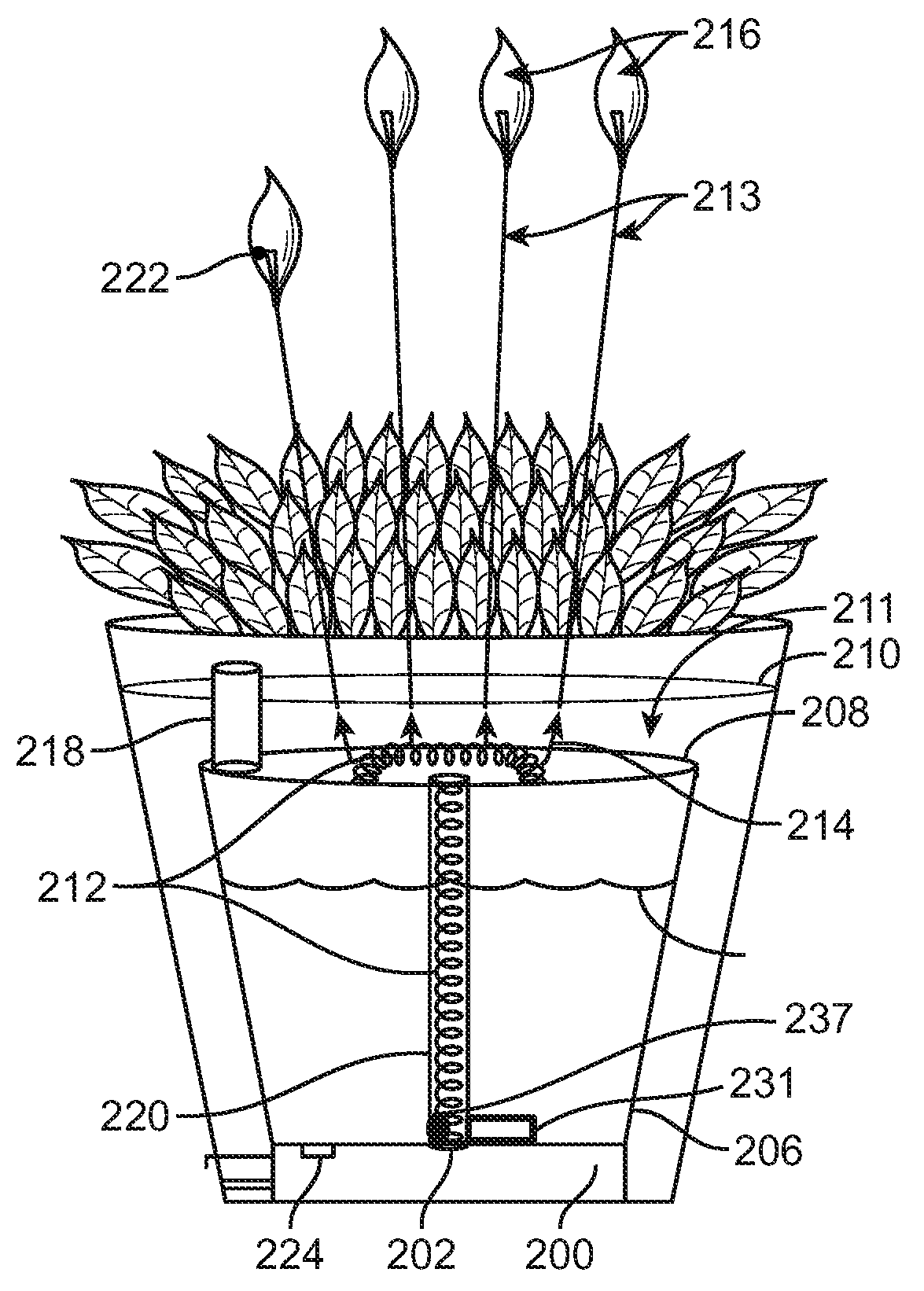Artificial plant humidifier
a technology for humidifiers and artificial plants, applied in air humidification systems, heating types, lighting and heating apparatuses, etc., can solve problems such as medical problems, dry skin, lips and eyes, itching and flaking skin,
- Summary
- Abstract
- Description
- Claims
- Application Information
AI Technical Summary
Benefits of technology
Problems solved by technology
Method used
Image
Examples
Embodiment Construction
[0025]In the following detailed description, numerous specific details are set forth in order to provide a thorough understanding of embodiments or other examples described herein. In some instances, well-known methods, procedures, components and circuits have not been described in detail, so as to not obscure the following description. Further, the examples disclosed are for exemplary purposes only and other examples may be employed in lieu of, or in combination with, the examples disclosed. It should also be noted the examples presented herein should not be construed as limiting of the scope of embodiments of the present disclosure, as other equally effective examples are possible and likely.
[0026]The artificial plant with regard to the present disclosure is preferably modeled after a naturally occurring plant having multiple stalks, or stems, that extend from soil to a flower or spadix. Generally, model plants will have multiple stalks which can serve as hollow water vapor condui...
PUM
| Property | Measurement | Unit |
|---|---|---|
| length | aaaaa | aaaaa |
| length | aaaaa | aaaaa |
| height | aaaaa | aaaaa |
Abstract
Description
Claims
Application Information
 Login to View More
Login to View More - R&D
- Intellectual Property
- Life Sciences
- Materials
- Tech Scout
- Unparalleled Data Quality
- Higher Quality Content
- 60% Fewer Hallucinations
Browse by: Latest US Patents, China's latest patents, Technical Efficacy Thesaurus, Application Domain, Technology Topic, Popular Technical Reports.
© 2025 PatSnap. All rights reserved.Legal|Privacy policy|Modern Slavery Act Transparency Statement|Sitemap|About US| Contact US: help@patsnap.com



